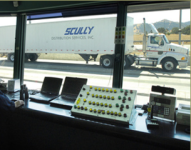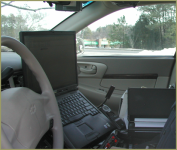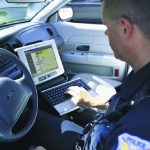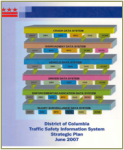KLS is dedicated to supporting Federal agencies, States and local agencies in improving their electronic
communication flow with their customers and stakeholders; we do this by creating:
-
Powerful Simulations.
-
Multimedia / Animations.
-
Graphics / 3-D visualizations.
-
Custom Programming.
-
Complex Database Applications.
-
Web-Based Applications.
-
E-Learning Applications.
-
508 Compliance.
-
Other Clearinghouse / Learning Center Applications
KLS projects include E-Citation, CV inspection and weight enforcement, WIM, School Safety and Management
of infrastructure assets, and Automated crash data capture.
KLS now has CV Size and Wt. System Software, which was developed using Microsoft
Visual Studio 2005, Microsoft Office 2007 and Microsoft Windows Server 2008.
|

|
|
CV Size and Weight
|
|
KLS is developing the CV Size and Weight enforcement system plus e-citation.
We are also developing a District Truck Safety Enforcement Plan.
|

|
|
Traffic Safety / Crash Data
|
|
KLS has developed a GIS-based crash data system that includes automatic report capabilities
and data linkages for data validation/accuracy and completeness.
We also use Google maps to plot crash data in real-time.
|

|
|
CDI Program
|
|
KLS recently developed the FHWA Crash Data Improvement Guide and accompanying workshop.
KLS also supports 17 State DOTs as they review, assess and provide technology support
on their crash database systems.
|

|
|
Traffic Records Strategic Plan
|
|
KLS developed the TRS plan that conforms to SAFETEA-LU legislation. It is a coordinated/integrated
IS plan that will improve traffic records collection, analysis, and reporting. The estimated
plan project cost is $17M.
|

|
|
Safer Routes to School, District of Columbia
|
|
The project is designed to improve the routes children take as they walk and bicycle to and from school.
KLS completed this task for 17 schools by undertaking a series of surveys and assessments across all four Es.
KLS assessed transportation modes as well as the school site and neighbourhood to determine the conditions of
street traffic, parent and bus drop-off locations, sidewalks, pedestrian crossings, curb ramps, and the
overall safety of existing routes to school. KLS used GPS to map TCDs and other infrastructure attributes.
Staff also contacted District, school and local community officials / stakeholders to ensure their
involvement in the process. The assessments led to the development of a school safety condition rating INDEX for work prioritization.
|
|
Truck Warning (TW) System (TOC)
|
|
KLS supported the FHWA Contract Project Manager, Office of Safety to develop the TW System with Oak Ridge National Laboratory (ORNL),
which includes both onboard instrumentation and cooperative infrastructure elements. The test fleet
consisted of three tractors and six trailers that travel a dedicated route that includes all of I-75 in Tennessee.
The project was a public-private joint venture led by trucking company U.S. Xpress Enterprises.
Project objectives include testing/evaluating all components in a real-world, revenue service environment,
evaluating the driver interface, and correlating driver and vehicle behavior with highway geometry and functional characteristics.
|
|
Automatic Truck Rollover Warning System (ATRWS)
|
|
Contract Manager for FHWA, Office of Safety
to develop, deploy, and evaluate ATRWS (prime BMI). The project evaluated three prototype Automatic Truck Rollover
Warning Systems (ATRWS) located in Virginia and Maryland over 3 years to assess how the ATRWS performed and to
determine the cost effectiveness. More specifically, the requirements of this evaluation were to
(1) evaluate performance and maintenance requirements,
(2) evaluate the effectiveness of the ATRWS on speed reduction of detected trucks traveling at or near their rollover speed or maximum safe speed, and
(3) evaluate any improvements in safety resulting from the systems. Based on truck classificaiton and speeds as measured by the ATRWS,
it was concluded that these systems do affect truck speed reduction. Results showed that speed reduction was observed for all three ATRWS sites
(five lanes total) when fiber optic sign was activated. The results also showed that this speed reduction was usually higher than the speed reductions
of trucks that did not activate the sign. In fact, observations for the first and second evaluation periods showed an overall 29.0 and 21.7% speed reduction
from Stations 2 to 3 and Stations 5 to 6. These speed reduction percentages equate to approximate speed reductions at the Springfield, McLean, and Beltsville
ATRWS sites of 4.6 km/h (2.9 mph), 3.9 km/h (2.4 mph), and 2.3 km/h (1.4 mph) for the first evaluation period. The second evaluation period had similar speed reductions.
|
|